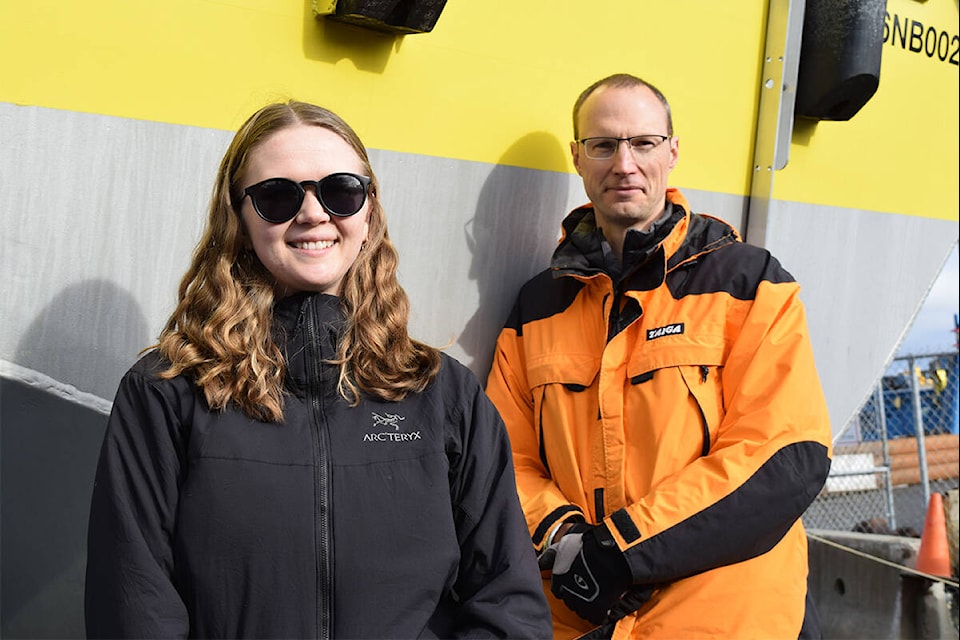The University of Victoria has developed a buoy to measure offshore wind resources for their potential to shift rural and First Nations communities away from fossil fuel reliance.
The large, bright yellow buoy, unveiled Wednesday morning (Nov. 10) at Point Hope Shipyard in Victoria West, is a project of UVic’s Pacific Regional Institute for Marine Energy Discovery and manufactured by Sidney’s AXYS Technologies. It’s designed to measure wind data using laser-based LiDAR (light detection and ranging) antennas previously only used in B.C. in a land-based application on Haida Gwaii.
The mobile antennae send eye-safe lasers as far as 200 metres into the coastal sky, explained Curran Crawford, institute co-director. The lasers will scatter to determine wind speed and ultimately provide information on the viability of offshore wind farms or carbon capture projects.
Twin wind turbines, solar panels and methane will power the buoy’s inaugural test-float in the waters near Trial Islands the week of Nov. 15.
READ ALSO: VIDEO: A peek under the Salish Sea off the shores of Victoria
The university’s goal with the buoy is to provide rural and First Nation communities on B.C.’s coast with the means for robust, sustainable energy projects using the previously unknown data.
“I’m really excited to start seeing some data and resources assessments so that communities that are off-grid or end-of-grid can offset their diesel generators and use the renewables that are at their fingertips,” said Cloe Immonen, a scientist with the institute and manager of logistics for the buoy.
A 2017 study from Simon Fraser University found that 27 remote B.C. communities produce twice the amount of carbon monoxide equivalent per capita than the Canadian average, due to their reliance on diesel fuel, of which one litre spilt into a drinking water supply could result in $500,000 in cleanup costs.
“We’ve talked with quite a few First Nations and there are aspirations (for offshore wind turbine development),” Crawford said, including two on B.C.’s West Coast. They’ve also held discussions with private wind power companies, including Denmark’s Orsted and Sidney-based Aeolus. The latter firm has developed wind farms on the north and southern tips of Vancouver Island.
READ ALSO: MP REPORT: Canada needs a renewable energy Crown corporation
Crawford said it will take a year of data collection at any location, however, before an offshore wind turbine proposal could be made in earnest.
He added that Sidney’s AXYS Technologies is one of two companies in the world capable of building the 5,500-kilogram, 30-foot tall buoy for the institute. “They’re one of those fly-under-the-radar companies, but they have a super important market for global wind energy development,” he said.
“(UVic) has been working on this for several years, so everyone is very excited to see the buoy deployed,” Immonen said. “Having B.C. get to 100 per cent renewable energy (through wind power generation), and even transporting power to Alberta or surrounding provinces would be incredible.”
Do you have a story tip? Email: kiernan.green@blackpress.ca.
Follow us on Twitter and Instagram, and like us on Facebook.
